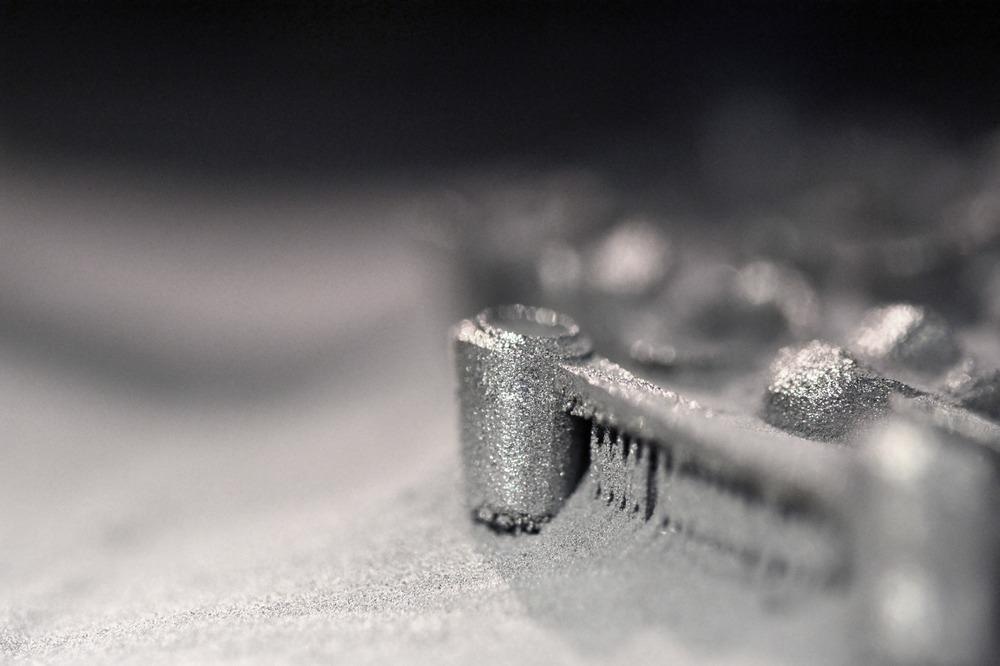 By Surbhi JainReviewed by Susha Cheriyedath, M.Sc.Jun 2 2022
By Surbhi JainReviewed by Susha Cheriyedath, M.Sc.Jun 2 2022In an article recently published in the journal Additive Manufacturing, researchers discussed the mechanical behavior of GRCop-84 copper alloy lattice structures made via additive manufacturing.

Study: Mechanical behavior of additively manufactured GRCop-84 copper alloy lattice structures.Image Credit: MarinaGrigorivna/Shutterstock.com
Background
Due to their high thermal and electrical conductivity, copper alloys like the copper-chromium-niobium (GRCop-42 and GrCop-84) family have been widely adopted for a variety of applications around the world. Advanced manufacturing methods, such as selective laser melting (SLM), have made it possible to manufacture geometrically complex parts with greater flexibility.
Complex designs such as lattice structures (LS) have become possible thanks to the capacity to additively produce intricate elements. The use of GRCop-84 with lattice structures results in thermally efficient structures. For the production, design, and materials mechanics communities, the structural integrity and mechanical behavior of any emerging class of materials is a significant area of research.
Several studies have looked at the design and mechanical performance of additively built lattice structures (AMLS) composed of various alloys. However, no research has been done on AMLS derived from GRCop-84.
About the Study
In this study, the authors investigated the interaction of microstructure and topology, as well as their combined effect on the quasi-static and dynamic behavior of additively built GRCop-84 lattice structures. The porosity and grain structure were studied using X-ray computed tomography (XCT) and optical microscopy, respectively.
The as-built AB samples were subjected to dynamic and quasi-static testing at strain rates of 103 s-1 and 10-1 s-1, respectively. The microstructure was altered using hot isostatic pressing (HIP) heat treatment while the topology was kept fixed to see if topology was the only driving mechanism that influences mechanical parameters such as yield strength.
The team looked at how the combined effects of microstructure and topology affect the quasi-static and dynamic performance of GRCop-84 LS with AB and HIP microstructure in various topologies. The LS samples were made in four alternative topologies, each with two different unit cell sizes and varied relative densities. Specimens were created utilizing a concept M2 machine and the powder bed fusion (PBF) process. The first batch of GRCop-84 powder was made utilizing the gas atomization method. The mechanical behavior of AB samples was compared to the mechanical behavior of HIPed samples to better understand the effect of microstructure on mechanical behavior.
The researchers documented the grain structure perpendicular and parallel to the construction direction using optical microscopy. The inner microstructural porosity of both AB and HIPed specimens was determined using X-ray micro-computed tomography (XCT).
Observations
Porosity was reduced by 66% when the unit cell size was reduced from 4 mm to 2 mm. Reduced porosity within the 2 mm unit cell samples facilitated a 35% to 60% increase in compressive yield strength. The 4 mm unit cell size was shown to be more responsive to HIPing, with a 40% reduction in porosity, while the 2 mm unit cell size had a 28% reduction in porosity.
In the case of the HIPed samples, the unit cell size was reduced from 4 mm to 2 mm, which resulted in a 48% reduction in porosity. In comparison to AB, HIPed samples showed greater plastic deformation and a stress plateau. Because of the brittle nature of the AB microstructure, AB samples had higher compressive strength. Different collapse mechanisms were seen in lattice structures with unit cell sizes of 4 mm and 2 mm.
The findings of quasi-static and dynamic compression tests revealed that deformation patterns were unaffected by relative density. It was discovered that post yielding of the AB samples was followed by a quick load drop that correlated with either structural shear band creation or local instability producing sudden layer collapse. HIPing GRCop-84 AMLS with a 4 mm unit cell size removed shear banding at the start of yielding. As a result, there was a stress plateau after yielding.
During quasi-static testing, HIPing GRCop-84 AMLS built of 2 mm unit cells incremented flow stress and reduced unexpected load dips. HIP was able to change the mechanical response of the LS in both quasi-static and dynamic tests. HIPing changed the microstructure of the samples by reducing porosity and relieving stress. The AB samples had a greater yield point due to residual stresses, with a rapid decline in strength at 10% strain, which lasted until the LS was completely densified.
Conclusions
In conclusion, this study provided the first experimental results on the quasi-static and dynamic behavior of additively built lattice structures composed of GRCoP-84 with varied unit cell sizes, topologies, and microstructures. Porosity was measured as a function of unit cell size and heat treatment history. The unit cell size and heat treatment had an impact on porosity.
Using XCT, it was discovered that samples with a unit cell size of 2 mm were less prone to void formation. HIPing resulted in a reduction in porosity as measured by XCT on samples that had been HIPed.
More from AZoM: Considering the Behavior of Doped SrTiO3 Ceramics
Disclaimer: The views expressed here are those of the author expressed in their private capacity and do not necessarily represent the views of AZoM.com Limited T/A AZoNetwork the owner and operator of this website. This disclaimer forms part of the Terms and conditions of use of this website.
Source:
Hazeli, K., June, D., Anantwar, P., et al. Mechanical behavior of additively manufactured GRCop-84 copper alloy lattice structures. Additive Manufacturing 102908 (2022). https://www.sciencedirect.com/science/article/abs/pii/S2214860422003244